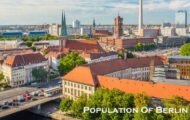Tanzania is a huge nation situated in Eastern Africa. Parts of Tanzania are in Southern Africa. Kilimanjaro, Africa’s most famous mountain is situated in the northeast part of Tanzania. The population of Tanzania is diverse, made out of a few ethnic and religious groups. It is a presidential protected republic and since the year 1996 its capital has been Dodoma, where the President’s Office and other important venues are situated.

Dar es Salaam, the previous capital holds most government workplaces and is the nation’s biggest city and also the main business center. European colonialism started in terrain Tanzania amid the late nineteenth century when Germany framed German East Africa, which led to British control after World War I. The territory was represented as Tanganyika, with the Zanzibar Archipelago being a different colonial ward.
Tanzania is also famous for its different types of sea food, specially in the Zanzibar area and you can definitely try out some of them.
POPULATION OF TANZANIA IN 2017:
Talking about population, in order to check out the population of Tanzania in 2017, we need to have a look at the population of the past 5 years. They are as per the following:
- 2012 – 47.78 Million
- 2013 – 49.25 Million
- 2014 – 51.01 Million
- 2015 – 52.64 Million
- 2016 – 54.30 Million
Getting from the past data of Tanzania from the year 2012-16, it has been noticed that there has been an increase of 6.52 Million in the past 5 years. Therefore, it has been seen that every year the population increases by 1.304 Million. Hence, the population of Tanzania in 2017 is estimated to be 54.30 Million + 1.304 Million = 55.604 Million. So, the population of Tanzania in the year 2017 as per estimated data = 55.604 Million.
TANZANIA Population 2017 – 55.604 Million(Estimated)
DEMOGRAPHY OF TANZANIA:
The country has a low median age with about 45% of its population under 15, 52% somewhere around 15 and 64 and only 3% beyond 64 years old. It is additionally has a diverse population with about 120 ethnic groups.
The Sukuma is the biggest ethnic community here and consists of 16% of the country’s aggregate population. Most of the nationals, including a number of the Sukuma and Nyakyusa people speak Bantu. There are gatherings of Nilotic and Luo population in the nation too.
POPULATION DENSITY AND GROWTH OF TANZANIA:
The population density of Tanzania is 47.5 persons per square kilometer. Its population growth rate keeps on moving with a present growth rate of 3.0% every year. The low median age of the country is due to a summed up HIV epidemic in the nation.
It is evaluated that there are more than 1.6 million Tanzanians as of now living with HIV/AIDS and the scourge has brought about an expected 1.3 million orphans. The general HIV rate in the country is 5.1%, despite the fact that this spans as high as 15.4% among females in a few regions.This may bring about low life expectancy, higher infant death rate and in addition a lower populace growth.
In spite of the epidemic, alongside high maternal and infant death rates, the number of inhabitants in Tanzania keeps on growing quickly. This is credited to the high birth rate of 37.25 births for every 1,000 individuals, with an aggregate fertility rate of more than 5 kids per woman. Tanzania has the eighteenth most noteworthy population growth rate. In the event that the pattern proceeds, it is anticipated that Tanzania will have a population of 95.5 million by the year 2050.
FACTS ABOUT TANZANIA:
- This wonderful nation is home to Mount Kilamanjaro, the tallest mountain in Africa. Three of the biggest lakes on the mainland are likewise are here in Tanzania.
- Its populace incorporates around 120 distinctive African tribal groups. The biggest gathering is the Sukuma, who reside in the north-western part of the nation.
- Currently, around 90 percent of the citizens live in the provincial zones.
- The country has a president, who is the leader of the nation. Presidents are chosen through a General Election, held once at regular intervals of 5 years.
- Its national and political capital is Dodoma, situated in the focal point of the nation.



